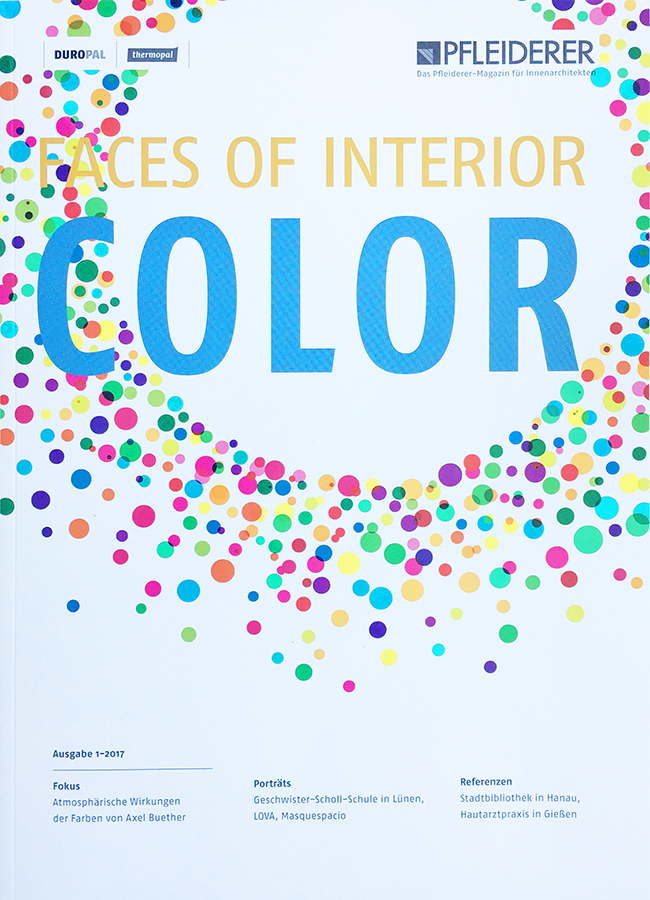Designing atmospheres
We work painterly with light and dark when we turn the designed rooms towards the light, turn them away from the light, bring the light into the interior through openings or exclude it through walls and ceilings. Light-colored materials and surfaces reflect the warm white spectrum of sunlight, which appears brightly colored to us where parts of the spectrum are converted into heat through absorption. Dark materials, on the other hand, absorb the visible part of the incident light strongly or completely, which also reduces the proportion of ambient light.
If the proportion of reflection on the surfaces facing the light decreases, the surfaces of all other components appear equally poorer in contrast, less structured, darker and less saturated. The entire room atmosphere becomes cloudy, which is accompanied by strong changes in the material coloration or architectural coloration. With increasing opacity, the haptics and value of the material surfaces and objects used are reduced. At the same time, orientation in the room is made more difficult.
We can counteract the negative effects of clouding with artificial light by methodically planning and using light colors in a targeted manner. The atmospheric quality of exterior and interior spaces is determined by the overall perception. This begins with the perspective-planned shaping, positioning, joining and composition of all components in relation to each other and to the room as a whole, continues with the haptic structure of all color surfaces and ends with the selection and arrangement of all light sources, the specifications for light color and illuminance as well as the setting of ambient, diffuse and specular accents.
Artificial light is a highly effective tool for creating atmospheres both indoors and outdoors when used after dark or in rooms with little daylight or dark rooms. In addition, it can compensate for many time and weather-related fluctuations in daylight, which helps to control the room atmosphere and thus the feeling of well-being and usability.
By mastering industrially produced light sources, we gain great power over the atmosphere of rooms, which we can stage like a stage. If, on the other hand, we forego the choreography of light and color in the design and planning phase, we accept considerable restrictions on the quality of stay, use and loss of value. We should therefore not leave the atmospheric effects of light and color to chance, but include them in all planning and decision-making processes from the outset.
Complete article: FACES OF INTERIOR Issue 1/2017



